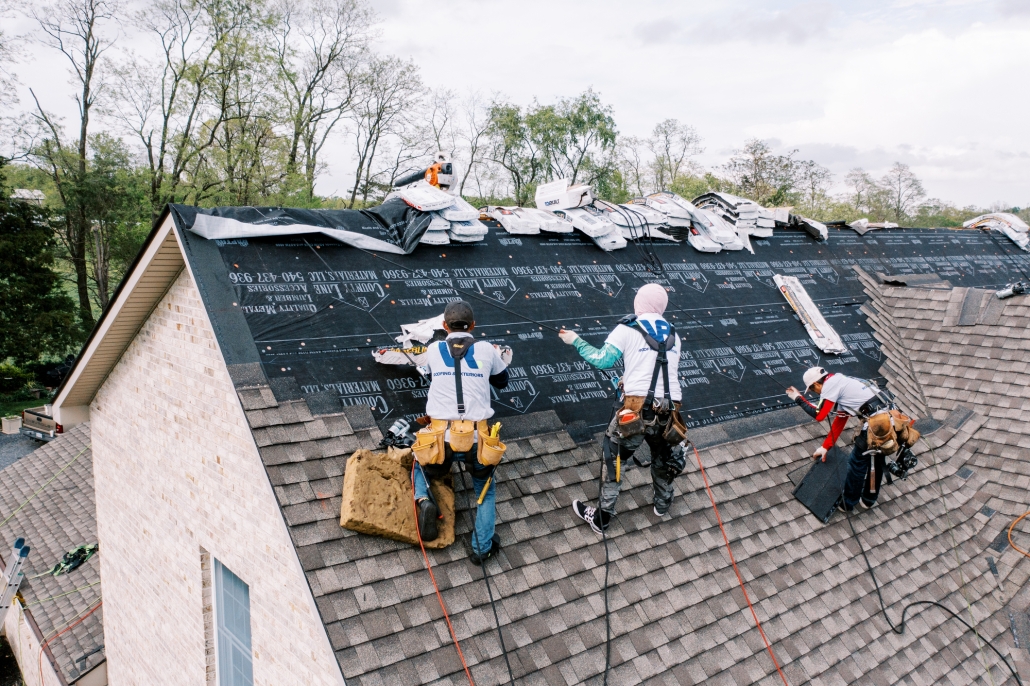The Benefits of Working with Gainesville FL Roofing Companies
The Benefits of Working with Gainesville FL Roofing Companies
Blog Article
Ideal Practices for Ensuring Correct Roofing Air Flow
A well balanced consumption and exhaust vent proportion, generally 1:300, plays a critical function, with intake vents preferably placed at the lower edge of the roof covering for awesome air entry and exhaust vents at the top for cozy air leave. Keeping insulation away from vents is critical to protect against air flow constraint.
Understand Ventilation Fundamentals
Correctly understanding air flow essentials is crucial for ensuring the durability and performance of roof. Efficient air flow alleviates wetness accumulation and temperature extremes in the attic, both of which can cause substantial structural damage over time. A well-ventilated roofing aids in protecting against typical issues such as mold and mildew development, timber rot, and ice dams, which can endanger the honesty of the roof covering materials and the underlying structures.
The primary objective of air flow is to promote the motion of air, permitting for a regular exchange in between the outdoor and interior settings. This balance is attained via a combination of consumption and exhaust vents that collaborate to maintain optimum air movement. Consumption vents, usually situated along the soffits or eaves, allow fresh air to get in the attic room space, while exhaust vents, typically located at or near the roof covering ridge, enable hot, humid air to leave.
Secret elements influencing the effectiveness of roofing ventilation consist of correct placement, ample sizing, and making certain that both consumption and exhaust vents are unhampered. Normal inspection and maintenance are crucial to identify prospective blockages, damages, or ineffectiveness in the air flow system, consequently protecting the roof covering's efficiency and sturdiness.
Kinds of Roof Covering Vents
Roof vents play a crucial role in maintaining effective attic air flow and, by extension, the general wellness of the roof system. Numerous types of roofing system vents are available, each with unique benefits customized to certain roofing needs.

Soffit vents are mounted under the eaves and operate in tandem with roof covering vents to guarantee a balanced consumption and exhaust system. By allowing cooler air to go into from below, soffit vents facilitate the expulsion of hot air with top vents. Gable vents, situated on the outside walls of the attic room, deal another effective solution, especially in homes with saddleback roofs.
Evaluate Your Present Ventilation

Next, consider the age and condition of your roof covering products and air flow parts. Older systems may not follow present building regulations or may have degraded gradually, minimizing their efficiency. Conduct a thorough exam to recognize any indicators of wear and tear, such as corrosion, damage, or voids that could jeopardize the system's efficiency.
Furthermore, measure the attic room temperature level and moisture levels. Heats and moisture can show poor ventilation - roofing companies in gainesville florida. Use a hygrometer and thermometer to obtain accurate readings, contrasting them with outdoor conditions. Relentless disparities recommend prospective issues that need addressing.
Installment Best Practices
Reliable installment of roofing ventilation systems is paramount for ensuring optimal efficiency and long life. Correct setup starts with recognizing the specific ventilation demands of the roofing and the structure it covers. This involves calculating the appropriate proportion of intake to wear down vents, commonly sticking to the 1:300 rule, which states one square foot of air flow for each 300 square feet of attic room floor room.

Consumption vents ought to be set up at the roof covering's lower side, commonly in the soffits, to enable amazing air to get in. Exhaust vents, on the other hand, ought to be installed near or at the roof's peak to facilitate the exit of warm, moist air.
Seal all vent connections carefully to avoid air leaks and potential water seepage. Use high-grade materials and adhere to supplier standards to ensure sturdiness and effectiveness. Additionally, integrating ridge vents with baffles can substantially boost air movement performance by stopping wind-driven rain and snow from entering the attic room.
Inevitably, precise installation of roof covering air flow systems alleviates potential concerns such as mold and mildew growth, ice dams, and architectural damages, making certain the roof covering's honesty and the structure's total wellness.
Normal Upkeep Tips
Uniformity in maintenance practices is fundamental to ensuring the lasting effectiveness of roof air flow systems. Routine inspections are essential, ideally carried out biannually-- in the springtime and loss. Throughout these evaluations, ensure that vents are devoid of particles, nests, and other obstructions that might impede airflow. Look for any type of indications of moisture build-up or mold and mildew, as these can suggest improper ventilation or leakages (roofing companies).
Cleaning the vents is another necessary job. Utilize a soft brush or a vacuum to eliminate dust and particles from intake and exhaust vents. Be careful not to harm the air vent displays or louvers Get the facts throughout the procedure. In addition, check the attic room room for any kind of indicators of water damages, which could endanger the integrity of the roof.
Appropriate insulation is equally vital. Guarantee that attic room insulation does not block the vents, as this can seriously restrict air movement. Reposition or replace it to maintain a reliable barrier. if any type of insulation has shifted or settled.
Last but not least, replace any damaged or missing out on elements without delay. Broken vents, cracked roof shingles, or worn-out blinking can all add to poor air flow and must be attended to immediately. Routine maintenance ensures that the roof air flow system works ideally, thereby expanding the lifespan of the roof itself.
Verdict
Ensuring proper roofing ventilation is vital for preserving the effectiveness and resilience of a roofing system. Adherence to the 1:300 consumption and exhaust air vent ratio, paired with the tactical positioning of vents, is vital. Regular semiannual assessments, debris cleaning, and making sure insulation does not obstruct airflow are critical practices. Executing these ideal methods will certainly cultivate a well-ventilated roof, thereby alleviating prospective issues associated with moisture build-up and extreme warmth, eventually prolonging the roofing's lifespan.
A well balanced intake and exhaust vent ratio, typically 1:300, plays a crucial duty, with consumption vents ideally put at the lower edge of the roofing for awesome air entrance and exhaust vents at the peak for cozy air departure. Intake vents, commonly located along the soffits or eaves, enable fresh air to enter the attic space, while exhaust vents, usually positioned at or near the roofing system ridge, allow hot, damp air to leave.
Soffit vents are set up under the eaves and job learn the facts here now in tandem with explanation roof covering vents to make sure a balanced consumption and exhaust system. By enabling cooler air to enter from below, soffit vents facilitate the expulsion of hot air with upper vents. Adherence to the 1:300 intake and exhaust vent proportion, combined with the calculated positioning of vents, is necessary.
Report this page